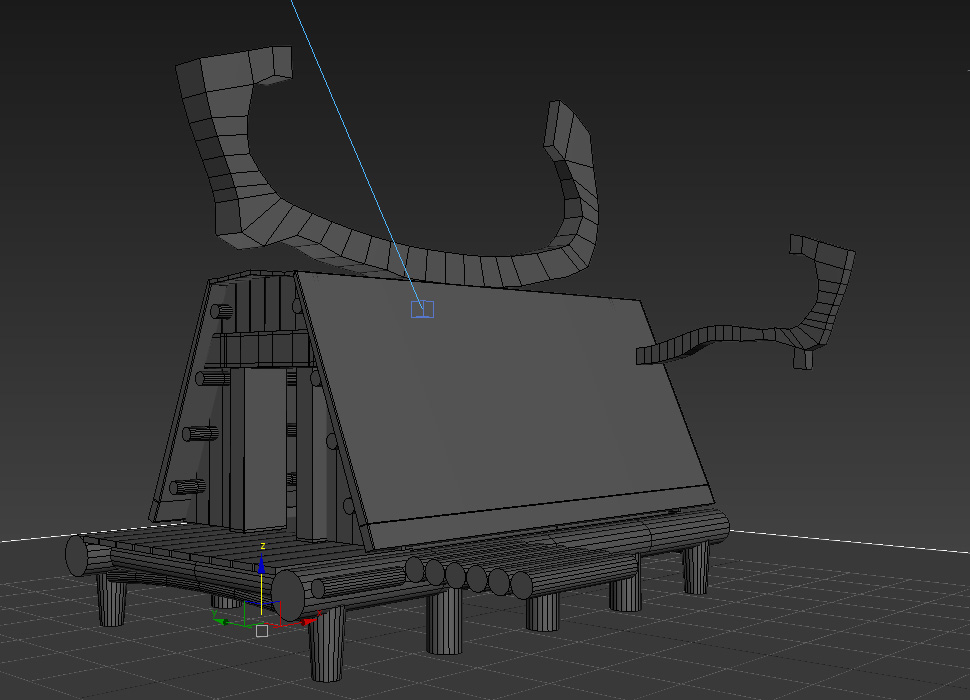Viking longhouse -- help a friend

So here I am, modeling a longhouse from a drawing I've made.
I have quite a few questions since I want to render this in V-Ray, using 3ds Max and Zbrush
(I downloaded GoZ Plugin , which makes you able to easily go back and forth between both programs). I would really appreciate if someone knowledgeable (which is probably everyone at the exception of me) could sometime help me during this process, especially for texturing/Lights

Replies
Wondering what kind of Reflect/Glossiness Straw has
I'm still a huge Vray light/texture noob so if you have any tips I'd really appreciate
If you want to use sculpting tools you have to stabilize your edges, so they don't become smoothed when you import to ZBrush. (There is an option to import without geometry smoothing, but that is more useful for texturing in ZBrush); If you want to sculpt you best get an evenly subdivided mesh with stabilized or beveled corners.
Make sure that you have polygons everywhere, before sculpting. The ends of these logs have N-gons with 12 or so vertexes.
Look at your reference more closely and google some real life thawed roofs. You got the technique wrong. These roofs are layered patches of straw, which are on top of each other and cause some bulky extrusions, which give the roof an organic surface. So they usually don't run horizontally, but vertically. You might even try making small patches first and layering them on top of each other, as if you were building this house for real.